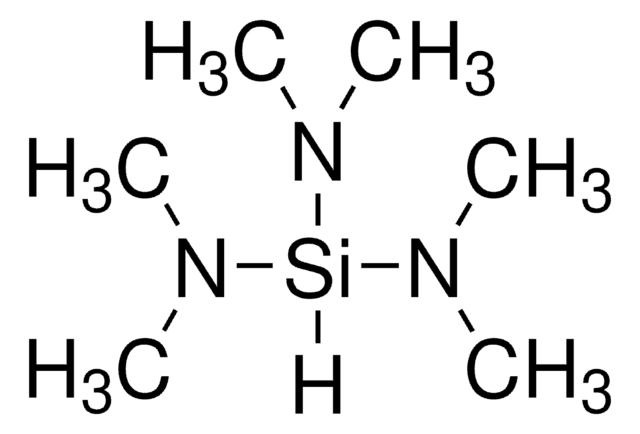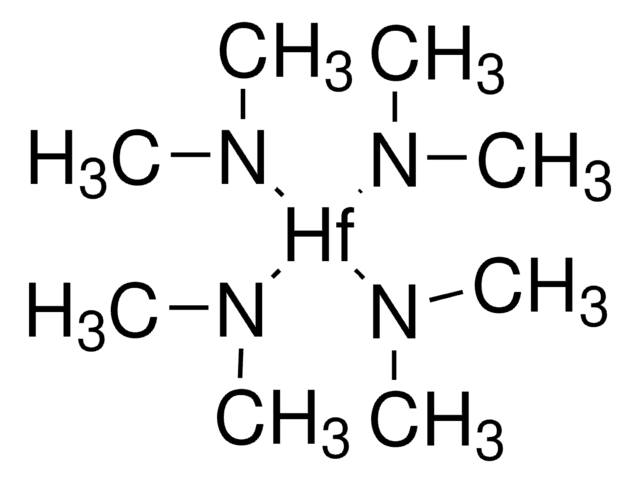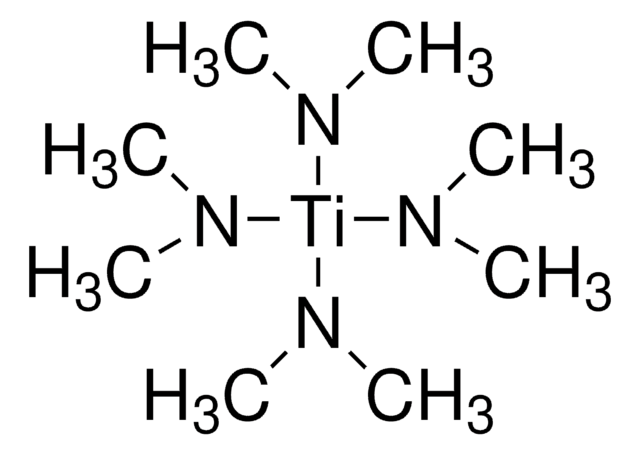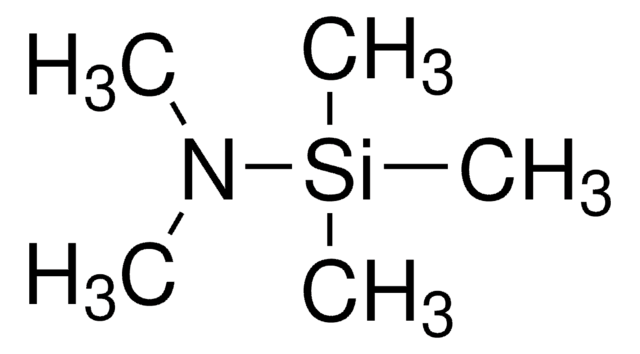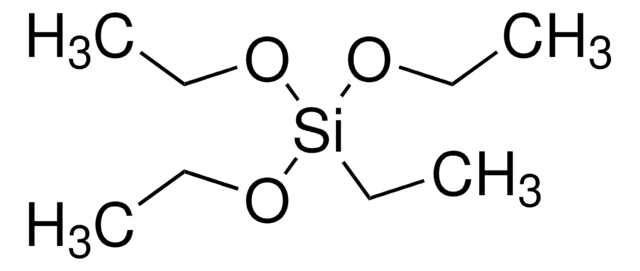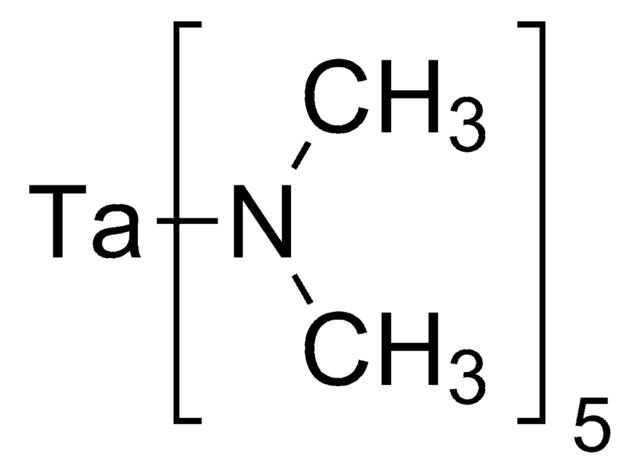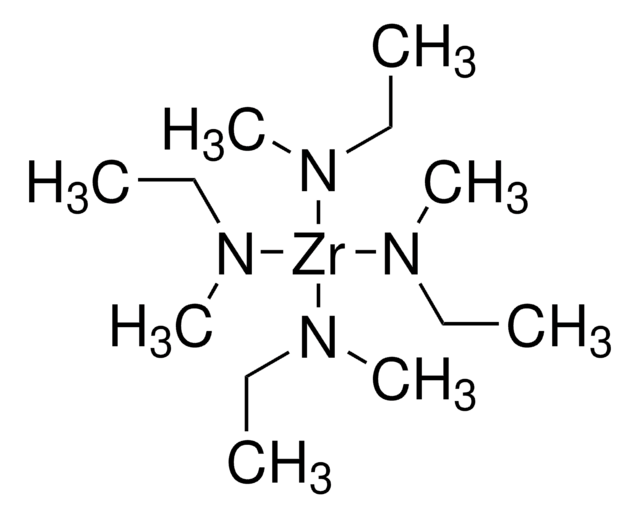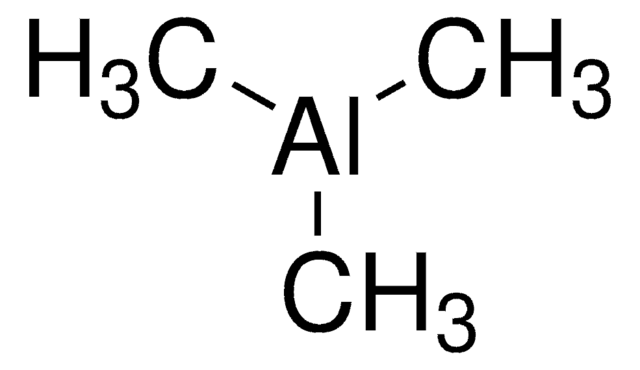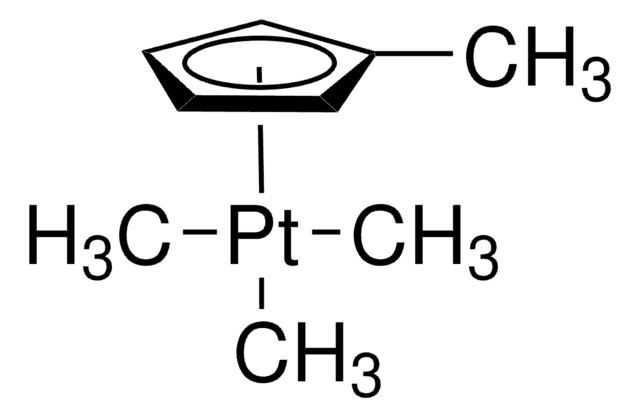Kluczowe dokumenty
759562
Tris(dimethylamino)silane
packaged for use in deposition systems
Synonim(y):
Tris(dimethylamino)silane, (Me2N)3SiH, N,N,N′,N′,N′′, N′′-Hexamethylsilanetriamine, Tris(dimethylamido)silane, N,N,N′,N′,N′′,N′′-Hexamethylsilanetriamine, TDMAS
About This Item
Polecane produkty
Poziom jakości
Próba
≥99.9% (GC)
Postać
liquid
tw
142 °C (lit.)
mp
−90 °C (lit.)
gęstość
0.838 g/mL at 25 °C (lit.)
ciąg SMILES
CN(C)[SiH](N(C)C)N(C)C
InChI
1S/C6H19N3Si/c1-7(2)10(8(3)4)9(5)6/h10H,1-6H3
Klucz InChI
TWVSWDVJBJKDAA-UHFFFAOYSA-N
Szukasz podobnych produktów? Odwiedź Przewodnik dotyczący porównywania produktów
Opis ogólny
Zastosowanie
- As a silicon source for deposition of aluminum silicate on TiO2 anodes for dye-sensitized solar cells vis atomic layer deposition method.
- As a precursor to fabricate functionalized Si reinforced separators for Li-ion batteries.
Hasło ostrzegawcze
Danger
Zwroty wskazujące rodzaj zagrożenia
Zwroty wskazujące środki ostrożności
Klasyfikacja zagrożeń
Acute Tox. 3 Dermal - Acute Tox. 3 Inhalation - Acute Tox. 4 Oral - Eye Dam. 1 - Flam. Liq. 2 - Skin Corr. 1B - Water-react 2
Zagrożenia dodatkowe
Kod klasy składowania
4.3 - Hazardous materials which set free flammable gases upon contact with water
Klasa zagrożenia wodnego (WGK)
WGK 3
Temperatura zapłonu (°F)
16.0 - 32.0 °F - closed cup
Temperatura zapłonu (°C)
-8.89 - 0.00 °C - closed cup
Wybierz jedną z najnowszych wersji:
Certyfikaty analizy (CoA)
Nie widzisz odpowiedniej wersji?
Jeśli potrzebujesz konkretnej wersji, możesz wyszukać konkretny certyfikat według numeru partii lub serii.
Masz już ten produkt?
Dokumenty związane z niedawno zakupionymi produktami zostały zamieszczone w Bibliotece dokumentów.
Klienci oglądali również te produkty
Produkty
Nanocomposite Coatings with Tunable Properties Prepared by Atomic Layer Deposition
Spin-based electronic (spintronic) devices offer significant improvement to the limits of conventional charge-based memory and logic devices which suffer from high power usage, leakage current, performance saturation, and device complexity.
The properties of many devices are limited by the intrinsic properties of the materials that compose them.
Nasz zespół naukowców ma doświadczenie we wszystkich obszarach badań, w tym w naukach przyrodniczych, materiałoznawstwie, syntezie chemicznej, chromatografii, analityce i wielu innych dziedzinach.
Skontaktuj się z zespołem ds. pomocy technicznej